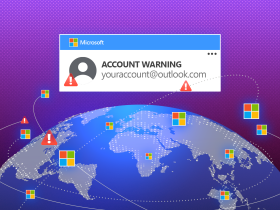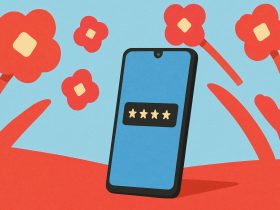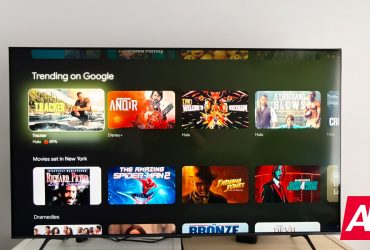Breaking Up With Your Apps: What Soaring Subscription Cancellation Trends Reveal About Consumer Habits
Contents
Many companies have realized that subscriptions are the way to go, but cancellation trends suggest that customers are getting tired of it. But why? I think this scenario might be familiar to most of us.
Your phone buzzes.
It’s a text from your credit card company: your Amazon Prime membership just auto-renewed. The next day, another ping—this time, it’s Netflix. Then Spotify. One by one, the charges pile up like digital clutter you forgot to cancel.
As one user on Reddit writes, “I remember when there was a useful app and you could just buy it outright for $3.99 instead of committing to a never-ending $2/month subscription. Now everything from alarm clocks to bathroom scales wants a monthly fee.”
According to new research by Sparrow, Amazon Prime leads subscription cancellation trends with 578,000 monthly cancellation-related searches. Disney+ and Hulu aren’t far behind, while Snapchat and TikTok dominate “delete” search terms. The message is loud and clear: people are getting fed up with the subscription model.
What once felt like a smarter, cheaper alternative to cable has ballooned into a stack of monthly charges that sneakily drain your bank account. Subscriptions have become so embedded in our lives that we barely notice the cost—until suddenly, we do.
The subscription fatigue is real
When streaming services first started popping up, there weren’t that many. And they felt affordable—borderline cheap, even. Paying $10 a month for unlimited movies on Netflix? Or $10 for all-you-can-stream music on Spotify? That sounded downright reasonable.
Compare that to cable TV, which still bombards you with ads despite the steep fees. Or the iTunes era, where $10 bought you a single album. Suddenly, streaming felt like the future. For a flat monthly fee, you had the world at your fingertips.
So for a while, the subscription model felt like a win-win. Pay a small amount, get unlimited access. But then, everything from fitness apps to email clients jumped on the bandwagon. What used to be one or two subscriptions ballooned into dozens, each with their own logins, billing cycles, and ecosystems.
$3.99 a month to support your favorite email app? Sure, why not? It’s only four bucks. But repeat that decision 10 or 20 times and suddenly you’re staring at a $100-a-month drain on your bank account. The rise of small recurring charges—from alarm clocks to journaling apps—has contributed heavily to today’s subscription cancellation trends.
And it’s not just about the money anymore—it’s the mental weight. Managing subscriptions has become a chore. In an era of rising costs and tighter budgets, people are finally doing the math—and then doing the canceling.
Amazon Prime’s 578,000 monthly cancellation-related searches reflect more than just price sensitivity; they reflect burnout. Disney+, Hulu, and Audible aren’t far behind. There are simply too many platforms, and not enough value to justify the cost.
As Elie Ofek, Professor of Marketing at Harvard Business School, notes, “There is such a thing as a poorly thought-out subscription model. You have to be careful in terms of what subscriptions you think people will want. The pricing structure also has to be ‘right’ in order to be successful.”
Subscription cancellation trends on the rise
When Netflix first announced it could offer unlimited movies and TV shows for just $10 a month, it sounded too good to be true. What was the catch? At the time, it felt like the perfect answer to piracy. Why bother torrenting when you could stream everything legally for the price of a few cups of coffee?
Companies have gotten greedy. Perhaps many of these companies initially scoffed at Netflix and Spotify’s idea of customers paying a flat fee and getting unlimited access to a catalogue of TV shows, movies, and music. But when they started raking in the money, many were quick to jump on board.
Now, almost everyone has their own streaming service, including HBO, once a cable staple.
But the golden age of streaming may be over. Once hailed as the future of entertainment, streaming services are now facing a harsh reality: users are walking away.
Seven of the ten most-canceled apps are streaming platforms. Amazon Prime, Disney+, Hulu, Paramount+, Peacock, Audible, Spotify—even Netflix—are all seeing a steady stream of cancellation-related searches. The message is clear: users are rethinking the value of their subscriptions.
These platforms now dominate subscription cancellation trends, as users grow tired of exclusive content catalogues and rising monthly fees.
Soaring prices across the board
Why the change of heart? For starters, prices have gone up across the board. On top of that, platforms are hoarding exclusives, introducing ads into previously ad-free tiers, and fracturing content across too many services. What started as a sleek, affordable alternative to cable now feels like cable all over again—just more fragmented, more expensive, and harder to manage.
Many consumers are adapting by becoming more strategic. “We rotate our streaming services,” explains AdditionalAttorney on Reddit. “I keep Netflix all the time and have Amazon Prime. The rest—Apple Plus, Hulu, Peacock, Paramount—I only ever have one. I cancel and sign up based on binge-watching a show that becomes available.”
Hulu alone saw nearly 150,000 cancellation-related searches last month. Paramount+ wasn’t far behind with 139,000. Peacock, once bolstered by big-budget exclusives, is pulling over 100,000. These newer platforms are struggling to retain attention and subscribers.
Even Netflix, long considered untouchable, isn’t immune. With 93,000 monthly cancellation searches, it may not be bleeding users like its rivals, but price hikes and password-sharing crackdowns have stirred frustration. The question for many is no longer “Which service should I subscribe to?” It’s “Which one do I cancel first?”
Streaming media analyst Dan Rayburn explains, “Every single company has raised rates, and the No. 1 cost is licensing and producing content. The cost of licensing has skyrocketed, and as a result, companies are unable to generate profit unless they charge consumers more.”
The novelty of having access to “everything” has worn off. Now, people are keeping one or two services—and showing the rest the door.
What’s next for subscriptions?
At this point, it’s starting to feel like we need a Netflix or Spotify—but for subscriptions. One service to manage them all. But that’s just a pipe dream. No company wants to give up exclusive rights to content. They don’t want to share the pie—they want the whole damn thing.
But the surge in subscription cancellation trends isn’t just a warning shot. It’s a sign that the subscription model, as we know it, is headed for a reckoning.
Streaming platforms and app developers are already scrambling. Some now offer annual billing discounts. Others are pushing ad-supported tiers to reel back price-sensitive users. Disney is betting on bundles. Netflix is banking on global expansion and original content. But is it enough?
Consumers are getting smarter. They no longer care about massive content libraries alone. They’re asking themselves practical questions: How often do I actually use this? Is it worth the cost? Can I live without it? More often than not, the answer leads straight to the cancel button.
In the near future, we might see more flexible pricing—pay-per-stream options, short-term passes, or loyalty-based discounts. Bundling could make a comeback, not just within companies like Disney, but between platforms trying to keep users inside a shared ecosystem. Think: three apps for $20/month kind of deals.
Jonathan Carson, CEO of Antenna, observes, “A lot of customers won’t subscribe forever, but they will turn it on and off.”
Or maybe the era of ownership will quietly return. A generation raised on all-you-can-stream might start to rediscover the satisfaction of buying something once and keeping it forever.
As one Reddit user puts it, “I’ve started buying DVDs again when I find them for cheap at thrift stores… For a 30-year-old movie that plays for free on cable! I’ll buy the DVD at the thrift store for under a dollar and then I own the movie and don’t have to rent it again.”
Whatever happens next, one thing is certain: the days of mindlessly accumulating subscriptions are done. The cancel button isn’t just an exit anymore. It’s a reset.
What’s your reaction?
Love0
Sad0
Happy0
Sleepy0
Angry0
Dead0
Wink0










Leave a Reply
View Comments